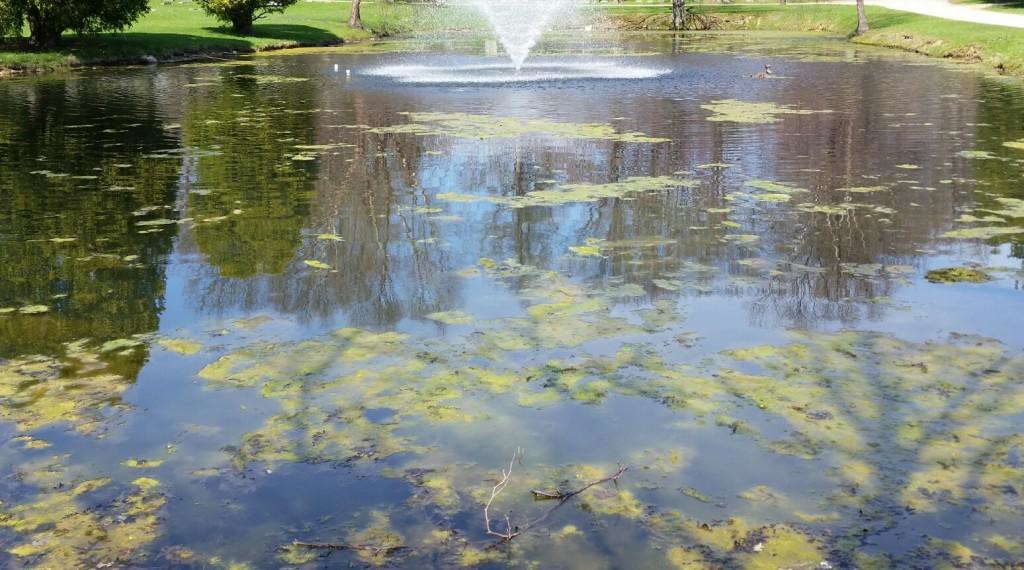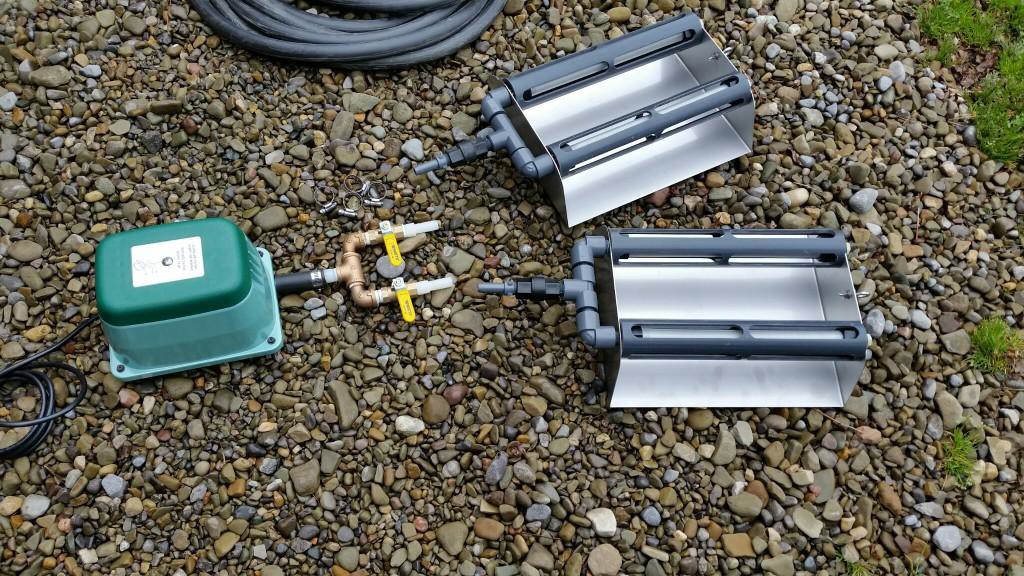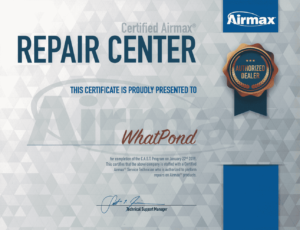Spring is hopefully here, at least it is warming up, buds on the trees and the grass is turning green. I guess the bummer part is the grass is growing too which means we’ll have to mow it eventually, bummer on that part.
With the days getting longer and temperatures warmer the pond water is also getting warmer. To the point we’ll transition from the cool weather algae to the good ole sting algae. You know the stuff growing up from the bottom then forming the ugly mat on the surface of the pond.
The reason we see the algae forming at the bottom and growing up to the surface forming the mats is nutrients. These nutrients are from leaves, dead decaying plants, geese waste, and fish waste as well. Plus what the rains wash in from the watershed. These would be items like more decaying leaves, grass clippings from last year. More items from the lawns could be the fertilizers from last year, dog waste that didn’t get cleaned up and in some cases leach beds that have been flooded or make its way to the pond.
So what do we do to keep the pond from being controlled by Algae? We always go and work to the weather. Last year we started the aeration systems up in mid April. This year we didn’t start until first wk of May. We did start the fountains almost as soon as the ice came off the ponds, helps with surface aeration, water movement and added oxygen for the fish.
Beneficial Pond Bacteria is also added to reduce the sludge and muck plus suspended organics in the water column which is the main reason we have the algae growth. There are two different forms of our Beneficial Pond Bacteria’s, one is in a water soluble packets and the other in compressed balls, 3 gram or 1 ounce and the packets are one ounce packets or 8 ounce packets ranging from a 1,000 gallon pond to one acre pond.
Last but not least we use Pond Dye, either the super concentrated liquid or our new 4 ounce water soluble packets, make it easy to color the pond. Four of the 4 ounce packets will treat a one acre pond and one quart will do the same. Coloring the pond 6-8’ deep. Depending on water quality.
Most important is the aeration system. The short of it is the best management tool to use for the pond. Using a special air compressor that sits on the shoreline it pushes air to the bottom of the pond, exiting from the diffuser that provide thousands of air bubbles which push, pull and entrain water up to the surface of the pond. As these bubbles race to the surface they are hundreds to thousands of gallons of water per hour. The main difference is the depth of water, a deep one acre pond shaped like a bowl, 12 deep could be aerated with one diffuser and a piston type compressor. IF the same pond was 6’ deep will need more diffusers because less water is being move because of the shallower depth.
Use the contact button above for help with your ponds health, Questions and to have an aeration system designed for your ponds needs.



